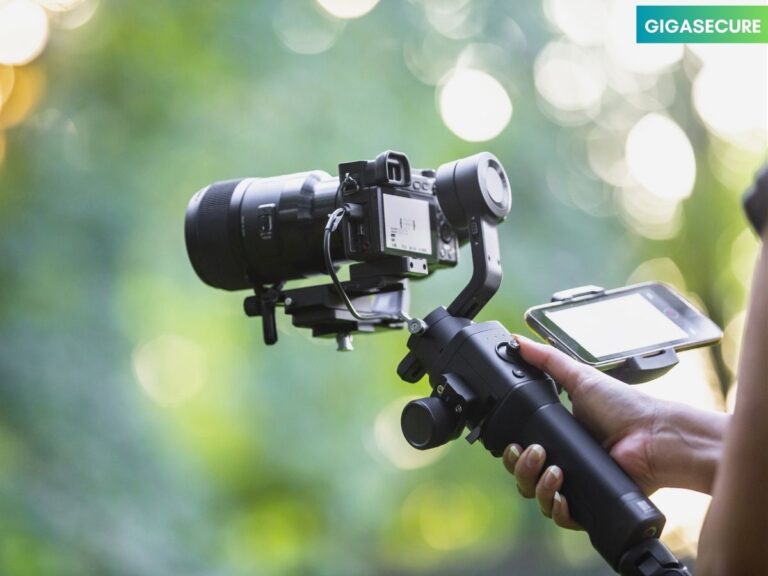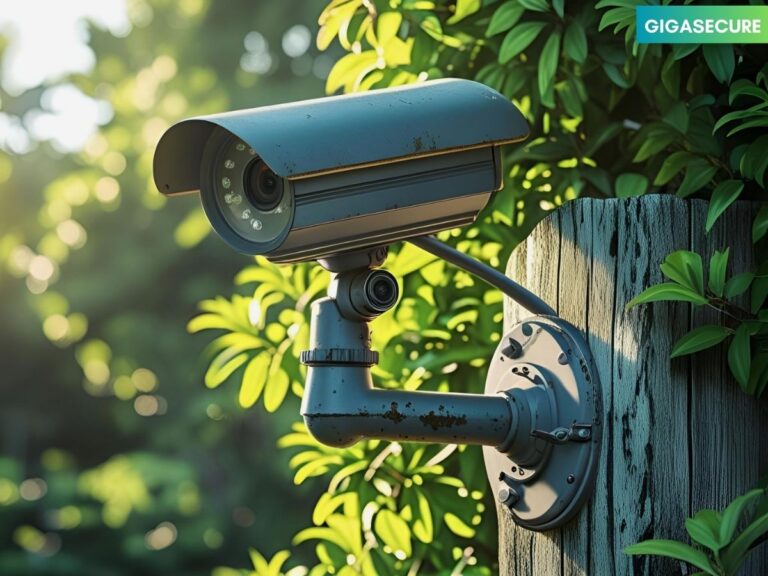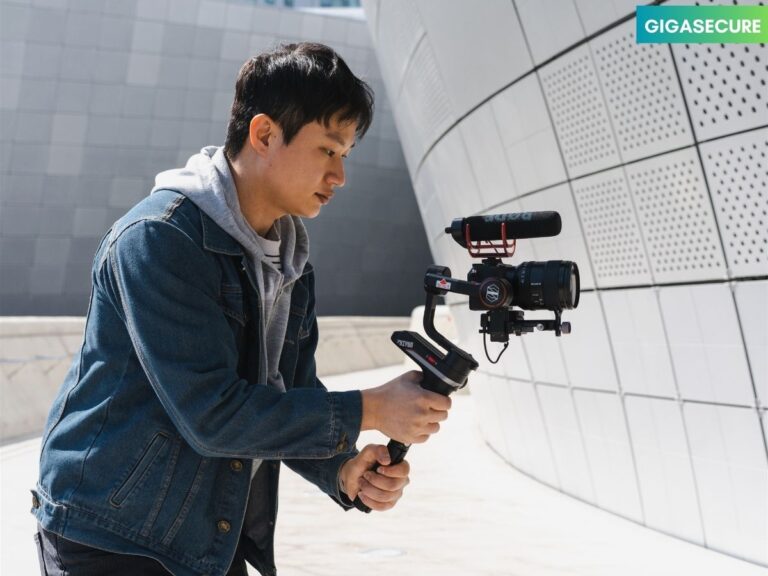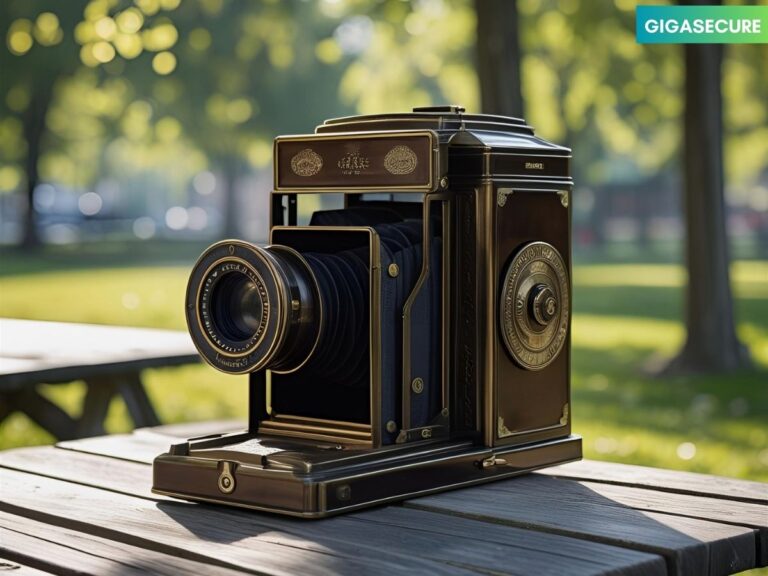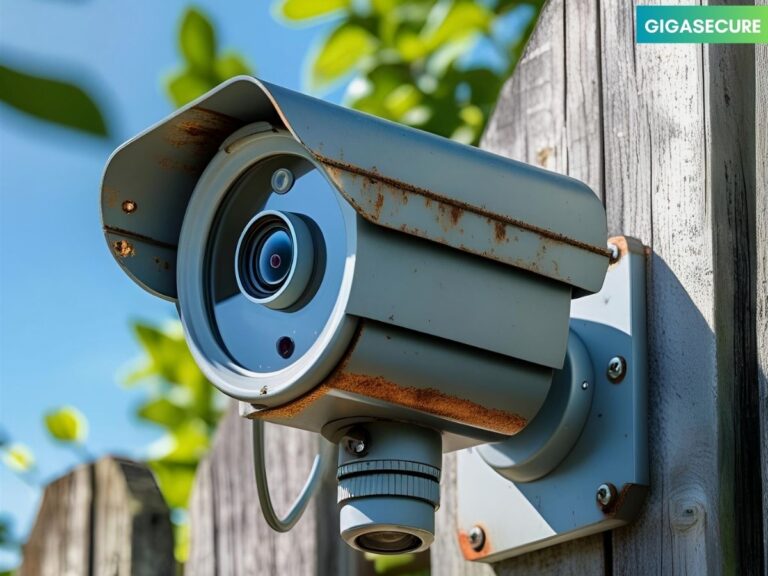Cloud vs Local Storage for Outdoor Security Cameras
As a homeowner, I’ve always worried about my property’s safety. Installing outdoor security cameras was a big step.
But it made me think about how to store the footage they capture. With smart home tech getting more common, choosing the right storage is more important than ever.
There are many things to think about when storing footage from outdoor security cameras. These include how reliable, easy to access, and affordable it is.
In this article, I’ll look at the good and bad sides of different storage options. This will help you pick the best one for your security needs.
Key Takeaways

The Critical Role of Storage in Outdoor Security Camera Systems
Outdoor security cameras need strong storage to work well. The storage part is key because it lets the camera record and keep footage. Without good storage, cameras can’t capture important evidence or watch in real-time.

The right storage makes outdoor security cameras work better. You need to think about weather resistance, how much it can hold, and how easy it is to get your data back.
Why Storage Decisions Matter for Outdoor Surveillance
Choosing the right storage is critical for outdoor cameras. It decides how long you can keep footage and how easy it is to find.
Cloud or local storage affects cost and security. I look at the camera’s quality, how often it updates, and how many cameras you have when picking storage.

How Weather and Environmental Factors Impact Storage Choices
Weather and the environment play a big role in picking storage for outdoor cameras. Extreme weather can damage storage devices.
Local storage might need a special case to stay safe, while cloud storage is more flexible and secure.
Cloud Storage Explained: How Your Outdoor Camera Footage Reaches the Internet
Cloud storage has changed how we handle outdoor security camera footage. It lets homeowners store and access their footage from anywhere, anytime.
The Technology Behind Cloud Storage for Security Cameras
Cloud storage for security cameras uses a network of remote servers. These servers store and manage data.
When your outdoor camera captures footage, it sends it to these servers over the internet. There, it’s safely stored and can be accessed on various devices.
Key features of cloud storage technology include:
- Scalable storage capacity
- Advanced encryption methods
- Reliable data redundancy

Leading Cloud Storage Providers for Outdoor Security Cameras
Many top cloud storage providers offer services for outdoor security cameras. They have different services and plans. Some of the best providers are:
- Amazon Web Services (AWS)
- Google Cloud Storage
- Microsoft Azure
Understanding Cloud Storage Costs and Subscription Plans
Cloud storage costs for outdoor security cameras vary. They depend on the provider, storage capacity, and subscription plan. It’s important to know these costs to pick a plan that meets your needs and budget.
When looking at cloud storage costs, consider these factors:
- Storage capacity
- Data retrieval fees
- Subscription duration
Local Storage Solutions: Keeping Your Security Footage On-Site
Local storage is a secure and efficient way to keep footage from outdoor security cameras on-site. It’s a top choice for its reliability and cost-effectiveness.
Exploring Your Local Storage Options
There are many local storage options for outdoor security cameras. Each has its own benefits.
Memory Cards for Standalone Cameras
Many standalone outdoor security cameras use memory cards for storage. These cameras are great for small-scale surveillance and are easy to install. Memory cards offer a simple, plug-and-play solution for local storage.
NVR Systems for IP Camera Networks
NVR (Network Video Recorder) systems are a strong choice for IP camera networks. They handle multiple camera feeds and offer features like motion detection and alerts. NVR systems are scalable and flexible, making them good for larger setups.
DVR Systems for Analog Camera Setups
DVR (Digital Video Recorder) systems work with analog camera setups. They convert analog signals into digital footage for storage. DVRs are effective for local storage needs, even though they’re being replaced by IP cameras.
Calculating Your Storage Needs for Outdoor Footage
To find the right local storage, you need to figure out your storage needs. Consider camera resolution, frame rate, and the number of cameras.
Higher resolution cameras need more storage space. By understanding your surveillance needs, you can pick a solution that fits without breaking the bank.

Cloud vs Local Storage for Outdoor Security Cameras: Making the Right Choice
Choosing between cloud and local storage for outdoor security cameras involves several key factors. The decision depends on cost, accessibility, and how well each performs in different conditions.
It’s important to carefully consider both options based on your specific needs and circumstances.
Comparing Upfront Costs vs. Ongoing Expenses
Cost is a major factor. Cloud storage usually requires a monthly or yearly subscription fee. Local storage, on the other hand, requires an initial investment in hardware like DVRs or NVRs, and possibly more for storage devices.
Cloud storage costs are more flexible, as you can change your subscription as needed. But, local storage might be cheaper over time if you need a lot of storage.
| Feature | Cloud Storage | Local Storage |
|---|---|---|
| Upfront Costs | Low (subscription-based) | High (hardware purchase) |
| Ongoing Expenses | Monthly/Annual Subscription | Minimal (maintenance, upgrades) |
| Remote Access | Yes, via internet | Limited, requires port forwarding |
| Performance in Extreme Weather | Not affected | Can be affected by temperature, humidity |
Remote Access: Viewing Your Property From Anywhere
Remote access is key. Cloud storage lets you view your property from anywhere with an internet connection. This offers flexibility and convenience.

Performance in Extreme Weather Conditions
How well your storage solution performs in extreme weather is critical for outdoor security cameras. Local storage devices can be affected by temperature and humidity, which might reduce their reliability.
Cloud storage, on the other hand, is more resilient. It stores data in secure, climate-controlled data centers.
Protecting Your Privacy and Security Footage
Keeping outdoor security camera footage safe is key. It’s not just about stopping physical attacks. It’s also about keeping digital privacy safe.
When we talk about storing outdoor security camera footage, keeping it safe is just as important as capturing it.
Encryption Methods for Both Storage Types
Encryption is vital for keeping camera footage safe. Cloud storage should use end-to-end encryption.
This means data is encrypted before it’s sent and stored. Local storage also needs encryption, which can be done through software or hardware.
Advanced Encryption Standard (AES) is a top choice for encryption. It offers strong security.
Preventing Unauthorized Access to Your Outdoor Camera System
To stop unauthorized access, I make sure my camera system’s passwords are strong and unique. Keeping the firmware up to date is also key.
It fixes security holes. Using a VPN (Virtual Private Network) when accessing my camera feed remotely adds extra security.

Who Really Controls Your Security Footage?
Knowing who controls your security footage is important. Cloud storage providers have access to your data, but good providers encrypt it and control access tightly.
With local storage, I control who can access the devices. It’s important to check the terms of service for cloud providers to know how they handle data.
| Storage Type | Control Over Footage | Encryption Method |
|---|---|---|
| Cloud Storage | Shared with Provider | End-to-End Encryption |
| Local Storage | User-Controlled | Software/Hardware Encryption |
By understanding these points, I can better protect my outdoor security camera footage. This ensures my privacy and the safety of the footage.
Technical Considerations: Bandwidth, Video Quality, and Storage Duration
Choosing the right storage for outdoor security cameras means looking at bandwidth and video quality. I must think about how it will affect my home network and security system’s performance.

How Storage Choice Affects Your Home Network
My storage choice can really impact my home network’s bandwidth. For example, cloud storage needs a fast internet connection to upload footage. This can be tough on my network, if I have many cameras.
Local storage doesn’t use the internet for storing footage. But, it needs enough local network capacity for streaming video to my devices.
- Cloud storage: Requires strong internet connection; can strain bandwidth.
- Local storage: Doesn’t use internet for storage; needs local network capacity for streaming.
Balancing Video Resolution and Storage Capacity
Higher video resolution means clearer images but uses more storage. I have to find a balance between resolution and storage. For example, high-resolution cameras might need bigger storage or shorter retention periods.
- Decide on the video resolution I need for security.
- Pick a storage solution that fits the resolution I choose.
- Adjust the retention period to manage storage space.
Setting Appropriate Retention Periods for Outdoor Footage
Deciding how long to keep outdoor security footage depends on my needs and legal rules. I should think about how long I need the footage and how much storage I have.
If I store footage locally, I might need to delete old footage often. This makes room for new recordings. With cloud storage, I can usually change my plan to keep footage longer.
Installation and Maintenance Realities for Outdoor Camera Storage
Outdoor security cameras need a reliable storage solution. But, what does this mean for installation and maintenance? The choice between cloud and local storage greatly impacts setup and upkeep.
Setting Up Cloud vs. Local Storage Systems
Setting up cloud storage for outdoor security cameras is easy. It requires little hardware. On the other hand, local storage needs more work upfront. You have to install devices like NVRs or DVRs.
“Cloud storage is easy to set up,” says a security expert. “But local storage gives you more control and can save money over time.”
Long-term Maintenance Requirements and Challenges
Maintaining cloud storage means keeping your internet stable and managing subscriptions. Local storage, though, needs regular checks on devices and might need upgrades or replacements. Think about these needs when choosing between cloud and local storage.

When comparing local storage vs cloud storage, consider their benefits. Local storage gives you control and can save money in the long run.
Cloud storage is easy to access and scalable. Knowing these differences helps you choose the right option for your outdoor security cameras.
Real-World Outdoor Security Scenarios and Solutions
Outdoor security cameras are key to protecting properties. The right storage solution is vital for their success. Different situations need different storage methods.
Protecting Your Home’s Perimeter
Homeowners use outdoor cameras to watch their property’s edges. Local storage solutions work well here. They store footage on devices at home.
This method saves money and offers security. Data stays local, not in the cloud.
- Local storage devices like DVRs or NVRs store footage directly.
- This method cuts down on internet use.
- It’s a one-time cost with no subscription fees.
Securing Business Properties and Parking Areas
Businesses need advanced security, including cameras for parking and external areas. Cloud storage is beneficial here. It offers remote access and flexible storage.
- Cloud storage lets you watch footage from anywhere.
- It keeps important footage safe.
- It’s easy to grow storage as needed.
Monitoring Large Outdoor Spaces and Multiple Buildings
For big areas or many buildings, a mix of storage works best. Use local storage for main storage and cloud for backup and access.

Knowing your needs helps make the right choice for your security cameras.
My Personal Framework for Choosing Between Cloud and Local Storage
I’ve made a framework to help pick between cloud and local storage for outdoor security cameras. It’s based on my experience and key points I think are important.

Questions I Ask Before Making a Decision
Before deciding, I ask a few important questions. First, I look at the cloud storage benefits for outdoor security camera footage.
This includes remote access and automatic updates. I also think about the outdoor security camera storage considerations, like how weather affects local storage.
I consider my property size and camera needs. I compare cloud storage costs to local storage hardware costs. I also think about remote access and network bandwidth issues.
Creating a Custom Hybrid Storage Solution
Sometimes, a hybrid solution is the best choice. I might use local storage for main recording and cloud for backup or remote access. This needs careful planning for smooth integration.
By thinking about these points and asking the right questions, I can make a storage solution that fits my needs. It gives me peace of mind.
FAQ Of Cloud vs Local Storage for Outdoor Security Cameras
What are the main differences between cloud and local storage for outdoor security cameras?
Cloud storage keeps your footage online, so you can view it anywhere. Local storage stores it on-site, like on NVRs or memory cards. Cloud storage is great for easy access, but local storage can save money over time.
How do I choose between cloud and local storage for my outdoor security cameras?
Think about what you need, like how many cameras you have and if you want to view footage from anywhere. Cloud storage is good for easy access. But, if you care about privacy or have slow internet, local storage might be better.
What are the benefits of using cloud storage for my outdoor security camera footage?
Cloud storage lets you view your footage from anywhere, gets updates automatically, and can grow with your needs. It’s also safe from physical damage or theft because it’s online.
How do weather conditions affect local storage devices for outdoor security cameras?
Weather like extreme temperatures and humidity can hurt local storage devices. Make sure to pick devices that can handle the weather. Also, think about using protective housing.
Can I use both cloud and local storage for my outdoor security cameras?
Yes, you can use both cloud and local storage. This way, you get the privacy of local storage and the convenience of cloud storage.
What are the ongoing costs associated with cloud storage for outdoor security cameras?
Cloud storage costs money each month or year, depending on the provider and how much storage you need. Make sure these costs fit your budget.
How do I ensure the security and privacy of my outdoor security camera footage, regardless of storage choice?
Use encryption for both cloud and local storage, and keep your passwords safe. Choose cameras and storage from trusted brands. Also, keep your system’s software up to date to stay safe.
Conclusion
Choosing the right storage for your outdoor security cameras is key for good surveillance and peace of mind.
You have two main options: cloud storage or local storage. It’s important to know what you need and understand the good and bad of each choice.
When picking between Cloud vs Local Storage, think about costs, ongoing expenses, and if you need to access your cameras from anywhere.
Also, consider how well each option works in bad weather. Your choice affects how well your cameras work and how reliable they are.
There are many ways to store footage from outdoor security cameras. By looking at your needs and the technical details, you can choose wisely.
It might help to think about what you really need and ask the right questions. You might even want to mix both cloud and local storage to meet your needs perfectly.
This way, you’ll get the most out of your outdoor security cameras. You’ll keep your property safe and secure.
Remember, the right storage solution is out there. With careful thought, you can find the best one for your cameras.

